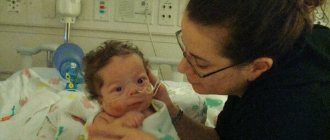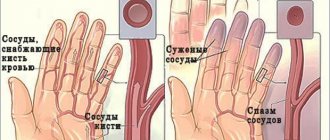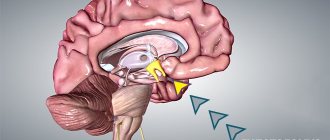Cerebral palsy is inherited: is the disease transmitted from parents to children – Izvilina
29.12.2019
13027
A study published in the British journal BMJ suggests that there are hereditary causes of cerebral palsy (CP) that can be passed down through generations. Scientists say that if a family has previously had cases of cerebral palsy, then the risk of this disease increases several times in the remaining children in this family.
Authors from Norway state that cerebral palsy is the most common cause of disability in children, occurring in approximately 2 cases in every 1,000 births. Typically, cerebral palsy leads to disturbances in movement and gait, involuntary movements, and rigidity of the muscles of the limbs. The disease affects a child's functionality differently, depending on the severity of the paralysis.
In severe cases, the patient cannot move, has intellectual impairment, blindness, and in some cases, epilepsy. Cerebral palsy is thought to result from damage to the immature fetal brain. Risk factors for cerebral palsy include multiple pregnancies, premature births, infections and brain injuries, and toxic lesions.
But in general, the causes of cerebral palsy are not well understood. Some studies have found that cerebral palsy is more common in some families than in others due to an unknown cause. Norwegian scientists say that this fact was very difficult to confirm, so they organized a special study devoted to this issue. It was truly a massive undertaking.
For their study, the researchers used data from the Medical Birth Registry of Norway, which is linked to the Norwegian national social insurance database. The sample consisted of 2,036,741 births registered in Norway from 1967 to 2002. Among them, 1,991,625 cases of single births and 45,116 cases of twins were born.
They further analyzed 1,852,144 pairs of first-degree relatives, as well as 1,699,856 pairs of second-degree relatives and 5,165,968 pairs of third-degree relatives. This stunning large-scale work revealed 3,649 cases of cerebral palsy among newborns - 1.8 cases per 1,000 children. The incidence of cerebral palsy was higher among twins - 5.1 versus 1.7 cases per 1,000 children.
If one twin had cerebral palsy, the risk of this disease in the second twin increased 15 times. In families where one child has cerebral palsy, an increased risk of this disease has been found in siblings. First degree relatives have a 6-9 times greater risk, and second degree relatives have an almost 3 times greater risk of cerebral palsy.
Those parents who suffer from cerebral palsy are 6.5 times more likely to have children with the same pathology. On the other hand, there is no evidence that third-degree relatives have an increased risk of cerebral palsy.
The study authors also found that the increased risk did not depend on the sex of the child and remained the same even with preterm birth, which was previously considered a separate factor. There are also some limitations of this interesting study, which the authors themselves described. There is not enough information about the different types of cerebral palsy, and they can have different causes.
Also, the work methodology did not provide for the separation of cases of cerebral palsy with postneonatal causes into a separate group. Scientists write that among people with cerebral palsy, a much smaller percentage decided to have children - 11% versus 51% of the general population of people over 19 years of age.
The authors suggest that "this is most likely caused by the social difficulties faced by people with disabilities, as well as limited opportunities for developing relationships."
An accompanying article written by Professor Peter Rosenbaum, a pediatrician at the Canada Research Chair in Childhood Disability, said: “Over time, as people with cerebral palsy have a greater biological potential to become parents, we will have more material for research and more confidence." The authors point out that their results “suggest the presence of a genetic component to cerebral palsy, as evidenced by a strong predisposition in genetically closest relatives.” However, they believe that it is not just genetics that may influence the risk of cerebral palsy in such families. Further research should be conducted to clarify this issue.
Konstantin Mokanov: Master of Pharmacy and professional medical translator
- Lady in Red. Psychology of color. Colors have different meanings in different cultures. In Chinese culture, the color red symbolizes good luck and protects against evil, so red jewelry can often be found at the entrance to homes in China. In Western culture, the color red is associated with temptation and sexuality. Research
- Genetic test can help differentiate psoriasis from eczema Although psoriasis and eczema are completely different diseases, they can look very similar, even under a microscope, and sometimes dermatologists have to use all their expertise to distinguish one disease from the other. Now researchers from Germany who have studied molecular furs in detail... Research
- Bedaquiline approved, questions remain A new drug, Bedaquiline, already used in some parts of the world to treat drug-resistant tuberculosis, has been approved by the FDA after promising clinical trial results. However, the public health group recommends further... Research
- Plants respond to the sound of chewing caterpillars Scientists have already proven that plants respond to music, wind and touch. Now two researchers have used audio and chemical analysis to demonstrate how plants respond to vibrations created by chewing insects. Research
- Do Oral Bacteria Cause Intestinal Inflammation? Oral bacteria may play a role in exacerbating inflammatory bowel disease. New research presented in the journal Oral Diseases suggests that ulcerative colitis and Crohn's disease may be worsened by certain virulent oral bacteria... Research
Source:
Is cerebral palsy inherited?
Minors may face a serious illness - cerebral palsy. This is a neuralgic disease that is directly related to brain damage.
Its danger lies in the fact that it leads to disability. If you start treating the pathology in time, then you can prevent its development, as well as eliminate some of the symptoms.
Some people are interested in whether cerebral palsy is inherited, and this question is really important. You should understand it in detail in order to understand what to expect from this disease.
- 1. Reasons
- 2. Symptoms
- 3. Cerebral palsy and heredity
Causes
Cerebral palsy is a dangerous disease that significantly reduces the child’s quality of life. It is for this reason that it needs to be treated in time, so that later you do not have to face a significant deterioration in the condition.
In particular, it is important to understand the question of what exactly leads to the occurrence of cerebral palsy. There are several main factors that increase the likelihood of pathology occurring.
Main reasons:
- Hypoxia. It can occur during the period of intrauterine development. In such a situation, the child will lack oxygen, and as a result, various dangerous diseases may develop.
- Various malfunctions in the formation of brain structures.
- Infections acquired during pregnancy. They affect not only the health of the mother, but also the child.
- Brain injuries. They can be obtained both during fetal development and during childbirth. Because of them, various dangerous pathologies can develop that will directly affect the future life of the child.
- Toxic poisoning of the body. This is also a dangerous condition that disrupts the functioning of the central nervous system and other important organs.
- Problems encountered during childbirth. This process does not go smoothly in all cases. As a result, children are faced with diseases, including cerebral palsy.
- Conflict between the Rh factor of the baby and mother.
It should be noted that in most cases the disease is caused not by one factor, but by several. In this case, most often it is hypoxia that leads to pathology, which can be caused by incorrect position of the fetus or early placental abruption.
In any case, if you suspect cerebral palsy, it is important to immediately consult a doctor, because the disease will not go away on its own. Only timely measures taken will significantly improve the patient’s well-being.
Symptoms
There are different types of cerebral palsy, so the symptoms may vary. In most cases, the first symptoms can be observed immediately after birth, as well as in the first weeks of the child’s life.
On ultrasound, the deviation will become noticeable if there are significant deviations in the development of the brain. It is extremely important to determine the presence of pathology as early as possible, because in this situation rehabilitation will be most effective.
Parents should be alert to the following signs:
- Increased anxiety and poor sleep.
- Convulsions and epileptic seizures. They appear in about a third of sick children, and often occur in infancy.
- Lag in emotional development. For example, a month-old child still cannot smile at people around him.
- Body asymmetry. Parents may notice that their baby's arms or legs vary significantly in thickness. It may also be that one limb is tense and the other is relaxed.
- Developmental delay. The child can hold and raise his head, crawl and roll over much later than others.
- Problems with speech development. It begins to form only after a long period; the child will try to talk much later than other children.
If parents detect even a few signs in their child, it is important to immediately consult a doctor. He will diagnose and prescribe treatment.
You will need to use medications, massage, do various exercises and take care of the child’s development. It is worth highlighting whether cerebral palsy is inherited or not. This will be useful information for the future.
Cerebral palsy and heredity
If the parents have a serious illness, then the question may arise whether cerebral palsy and heredity are related. Scientists claim that the pathology cannot be transmitted from parent to child. At the same time, some experts still believe that there is still a relationship with genes and cerebral palsy.
In most cases, doctors note that the disease itself cannot be inherited, but a predisposition to it can be passed on. At the same time, there are extremely few cases when a parent with cerebral palsy gives birth to a sick child.
Moreover, if the father or mother has a similar disease, then it is important to strictly monitor the pregnancy process. In this case, there will be a significantly lower likelihood that the child will suffer from pathology. In any case, you will need to remember whether cerebral palsy is inherited or not. Because there is no need to worry in vain that the child will definitely be born sick.
If you carefully approach the birth of your baby and follow all medical recommendations, then the likelihood of the disease occurring is extremely low.
Source:
Is cerebral palsy inherited, congenital or acquired?
Cerebral palsy (CP) occurs primarily due to hypoxia during fetal development. It represents oxygen starvation of the brain. There are many reasons for this pathological phenomenon.
Therefore, people suffering from this disease, before having children, seek to find out whether cerebral palsy is inherited or not.
Such a terrible diagnosis is a heavy blow for the baby’s parents, so a possible hereditary predisposition instills a sense of fear in their subconscious.
Source: https://fiz-disp.ru/razvitie/dtsp-po-nasledstvu-peredayotsya-li-zabolevanie-ot-roditelej-k-detyam.html
Main symptoms of cerebral palsy
Depending on the form of cerebral palsy, the causes of its occurrence, and the main symptoms, the presence of the disease can be recognized immediately after birth, in the first weeks of the baby’s life, or some time later in infancy. An ultrasound can detect the disease only if there is a significant deviation in brain development. It is very important to detect deviations in the baby’s development early. This will allow his rehabilitation to be carried out as efficiently as possible.
The following features in the child’s behavior should be a cause for concern for parents:
- anxiety, poor sleep;
- convulsions, shudders, epileptic seizures, sometimes stopping gaze. Seizures occur in about a third of patients, and can appear both in infancy and somewhat later;
- developmental delay: he began to hold and raise his head, roll over, and began to crawl late;
- absence or slowing of emotional development (for example, if by the age of one month the child cannot smile at others);
- excessive lethargy or excessive muscle tension, slowness or abruptness of movements. With proper development in babies, hypertonicity in the arms weakens by one and a half months, and in the legs by four months. If this does not happen, there is cause for concern;
- asymmetry of the child’s body - arms or legs are visually different in thickness, or one limb is tense and the other is relaxed;
- delay in speech development.
Having discovered one or more of the listed symptoms in a child of any age, having analyzed the causes of its occurrence, parents must certainly show it to specialists. An experienced pediatric neurologist will help make the correct diagnosis and also prescribe the correct set of procedures that will improve the child’s physical condition and will contribute to his socialization in the future. As a child gets older, it is more difficult, and sometimes even impossible, to put him on his feet, so cerebral palsy should be diagnosed as early as possible.
Is cerebral palsy inherited?
For every thousand newborns, there is one child with cerebral palsy. This disease and its causes are still being studied in detail. We will tell you whether cerebral palsy is a congenital or acquired disease, and how it is related to genetics.
For a long time it was believed that infantile paralysis has no relationship with heredity. Now scientists are not so clear about the question “is cerebral palsy inherited.”
It has been precisely established that in 2% of cases cerebral palsy is inherited. But still, it cannot be said that cerebral palsy is a hereditary disease. It can be triggered by a hereditary predisposition to certain pathologies.
The essence
Cerebral palsy (cerebral palsy) is caused by a number of factors that cause damage to the child’s brain. The main risk factor is oxygen starvation of the brain, due to which irreversible pathological changes develop in the tissues.
Skeletal muscles change pathologically. Muscle mobility decreases and pain appears. These symptoms are accompanied by others - speech, vision, hearing are impaired, convulsions appear, and pathologies of mental development are observed.
Symptoms are especially pronounced if cerebral palsy of groups 1 and 2 develops.
The term cerebral palsy combines a group of non-progressive chronic movement pathologies. They are secondary, the primary cause lies in brain abnormalities or lesions that develop during the peripartum period.
The most common condition is congenital cerebral palsy. There may also be acquired forms of it.
In adulthood, the likelihood of having a normal personal life and starting a family decreases significantly (we are talking about a pronounced manifestation of the disease).
The problem is that the patient develops visible movement disorders. His limbs don't move correctly.
In 30-50%, motor disorders are accompanied by a slowdown in intellectual development. Most often, intellectual impairment accompanies spastic quadriplegia (one of the forms).
Due to disturbances in the physiology of brain tissue, it is difficult for such children to master speech; they begin to talk later.
Traditionally, the cause of paralysis is considered to be that cells die in certain parts of the brain, or that these lobes initially developed incorrectly.
The changes can vary in intensity - from relatively mild to extremely severe, in which the patient cannot move. Infantile paralysis can result from a number of diseases, for example, polio, epilepsy. Now progressive scientists are increasingly suggesting that genetic predisposition also plays an important role in the development of pathology.
The disease manifests itself in the form of persistent motor disorders. They do not progress during further development of the organism. This gives scientists a reason to traditionally claim that infantile paralysis is not inherited.
Results of the latest research into the causes of cerebral palsy
A child who suffers from paralysis can be easily recognized by characteristic motor impairments: his movements are incorrect or involuntary. The muscles are too tight, causing the limbs to become stiff.
Pakistani scientists conducted observations of families in which children with cerebral palsy of various forms are growing up. It has been established that there is a risk that paralysis will recur in such a family (probability – 1:8). In this case, the autoimmune recessive form is observed mainly. A gene mutation (homozygous) was detected in 4 children. It provokes pathological changes in the protein structure.
After long-term observation of English and Swedish families in which children with paralysis are growing up, scientists identified 2% of patients with the genetic nature of the disease. They had no prenatal or postpartum complications.
Serious research was carried out by Norwegian scientists. They followed nearly 2 million participants using the Norwegian Medical Birth Registry. Data from 1967 to 2002 were analyzed.
Norwegian scientists have found that in families with a sick child, as well as in twins, the risk of developing paralysis increases. If one twin has cerebral palsy, the risk that the other will also develop the disease increases 15 times.
The risk of developing the disease increases if a child with this pathology has already been born in the family. There is a high chance that his next sibling will also get sick. But developmental pathologies of twins and twins may be due to the fact that inside the mother’s womb they simply mechanically interfere with each other.
They have less space to develop, which means the brain receives less oxygen.
If one of the parents has cerebral palsy, the likelihood that this disease will affect the child increases 6 times. The gender of the sick parent does not affect the likelihood of children becoming ill. Studies have not found an increase in incidence if a third-degree relative suffered from paralysis.
The listed facts only confirm that cerebral palsy can rarely depend on genetic factors.
Research is further complicated by the fact that children with paralysis often do not start families. Even if they manage to find a life partner, not everyone decides to have a child. Accordingly, it is not so easy to determine whether a disease is transmitted through genes.
There are many forms of infantile paralysis, some of which are completely independent of genetics.
Weak genes
It is still generally accepted that cerebral palsy is not a hereditary disease, but there are hereditary mechanisms that can influence its development. The severity of symptoms can also be transmitted through genes. We are talking about how resilient the nervous system is, how capable it is of resisting negative factors.
Scientists have no doubt that there is a relationship between pathological changes in the nervous system and the development of the disease. It has been precisely established that there are genes responsible for the state of the central nervous system and its functioning. In 2% of cases, it was found that cerebral palsy is hereditary.
Can broken DNA cause cerebral palsy? Doctors do not rule out the fact that gene disruption indirectly affects the development of paralysis due to malfunctions of the central nervous system.
It is possible that some children are born with a genetic predisposition to a weak nervous system. This can explain the different development of children with the same pathologies (fetal hypoxia, asphyxia, prematurity).
Some children develop normally even after such pathologies, while others develop infantile paralysis in one form or another.
Scientists emphasize that hereditary predisposition may be associated with the following factors:
- blood circulation in the brain tissue is impaired;
- spina bifida develops, blastomatous processes are observed;
- hysteria, stuttering, narcolepsy, epilepsy.
All of these manifestations can accompany cerebral palsy of varying severity.
The British medical journal BMJ published the results of many years of research that identified hereditary factors among the causes of cerebral palsy. Scientists observed families in which someone suffered from this disease. It has been established that it can be transmitted through generations. If someone close to you suffers from paralysis, the risk that the children in this family will also experience cerebral palsy increases significantly.
Norwegian scientists have found that cerebral palsy occurs in 2 cases out of every 1000 births. Often the disease leads to disability. The child’s gait and movements are impaired, sometimes speech, thinking, memory suffer, involuntary movements may appear, and rigidity of the muscles of the limbs develops.
The extent to which a patient's functionality is affected depends on the severity of the disease. In severe cases, the patient is unable to move, has noticeable intellectual impairments, and may develop blindness and epilepsy.
It is important to understand that it is not so easy to distinguish forms of infantile paralysis from hereditary pathologies of the central nervous system. Therefore, for example, spastic hereditary paraparesis is a form of cerebral palsy.
The problem in studying cerebral palsy lies in the fact that diagnosing neuromuscular diseases is a labor-intensive process. There is a lack of modern equipment and competent specialists. Therefore, diseases of the central nervous system that are only similar to paralysis are often classified as cerebral palsy.
Cerebral palsy can be associated with genetics in the following way: there is a part of the body that is genetically weakened. This is where disease and hereditary factors may intersect. But a direct connection between the genes of the parents and the child’s disease was not found.
The question was also studied: is cerebral palsy inherited from father and mother? The gender of the affected parent has not been found to increase or decrease the risk of developing the disease. The fact that one of the parents suffers from paralysis increases the risk of having a sick child.
However, the likelihood that a child will be born with cerebral palsy remains too low, so parents should not refuse to have a child for this reason. If a grandmother or grandfather suffers from the disease, this does not at all affect whether the baby will be born healthy.
Symptoms of cerebral palsy often resemble individual diseases of the muscles and nerves, which are hereditary. There are currently no thorough diagnostic parameters for neuromuscular diseases. This makes making a diagnosis much more difficult. However, cerebral palsy largely depends on the disruption of immunochemical mechanisms that are controlled by genes.
Scientists do not stop looking for a broken gene that can trigger the development of cerebral palsy. There is now quite a long way to go in solving this problem. The results obtained are difficult to interpret from a genetic point of view, because scientists have not yet determined how much the predisposition of the nervous system affects the functioning of the brain.
People with severe cerebral palsy find it difficult to arrange their personal life. They rarely go out in society; often, acquaintance is possible only with a disabled person. Such couples rarely have children.
If healthy couples have children in 57% of cases, then in couples faced with a similar disease - only in 10-11%. The quality and duration of their lives are reduced due to concomitant diseases and disorders of brain activity.
We are talking about a syndrome that develops in severe forms of cerebral palsy. Patients with a mild form can live to a ripe old age.
Prevention
If we talk about cerebral palsy caused by genetic failures, then it is impossible to prevent it. Other risk factors can be reduced or eliminated entirely.
- To prevent infection with measles, rubella, and chickenpox during pregnancy, you should be vaccinated against these diseases.
- In the early stages, you can overcome Rh incompatibility.
- To avoid head injuries, you should take care of the baby’s safety, especially from birth to two or three years. Car seats are recommended for infants.
- If IVF is necessary, care must be taken to ensure that the pregnancy is not multiple. This is the task of doctors performing IVF.
Scientists from England and Norway believe that the genetic component is present only during the development of certain forms of the disease. More research is needed to prove this.
Source: https://vsepromozg.ru/teoriya/dtsp-po-nasledstvu
How to reduce the risk of disease?
Stroke is called a lifestyle disease. Modern everyday life is full of stress and tension, which increases the likelihood of its occurrence. With the development of medicine, we are increasingly waiting for the discovery of a miracle pill, the use of which will save us from problems with blood pressure forever. In fact, it is a huge mistake to wait for magical remedies that do not require any effort from a person, because they do not exist, and there certainly will not be any in the near future.
And to reduce the risk of disease, proper nutrition plays a significant role. In developed countries, where diets low in salt and animal fats are popularized, doctors have noticed a significant decrease in mortality from stroke. The recommended amount of salt consumed per day is up to 5 g, fat - up to 25 g. This is the necessary daily portion for the normal functioning of the body. For people whose parents had a stroke, it is advisable to give up smoked meats and sausages and switch the basis of their diet to vegetables and fruits. Nowadays it is not difficult to find many recipes that will allow you to prepare healthy dishes that are very tasty.
To reduce the chance of developing the disease, it is imperative to exercise. Aerobic exercise is suitable for prevention purposes. They are based on repeated exercise, which increases the oxygen saturation of the body. Active walking, swimming, and jogging will give good results. Avoid high loads (weights, barbell rows, etc.). You shouldn't overwork yourself. Your task is to move, not set records.
If you have a genetic predisposition to stroke, it is very important to stop smoking. It is difficult to overestimate the harm from such a destructive habit. According to statistics, smokers are twice as likely to suffer from this disease. The same applies to alcohol abuse.
According to research by German scientists, people who eat chocolate in moderate portions (90-100 g per week) stabilize blood pressure and reduce the risk of stroke by up to 40%.
In order to detect problems with blood circulation at the initial stage, it is worth undergoing regular medical examinations. Diagnosing the development of pathologies that can lead to a stroke will enable the doctor to select the necessary course of medications and minimize the chances of a stroke.
Read more about stroke prevention using traditional and folk methods here.
Is cerebral palsy inherited, congenital or acquired?
Cerebral palsy (CP) occurs primarily due to hypoxia during fetal development. It represents oxygen starvation of the brain. There are many reasons for this pathological phenomenon.
Therefore, people suffering from this disease, before having children, seek to find out whether cerebral palsy is inherited or not.
Such a terrible diagnosis is a heavy blow for the baby’s parents, so a possible hereditary predisposition instills a sense of fear in their subconscious.
Hereditary predisposition
Couples in love should weigh all possible consequences before having a child, especially if one of them suffers from severe pathological processes.
In the case of cerebral palsy, many doctors do not deny the hereditary factor, but they also cannot confirm it. Most scientists believe that this disease cannot be passed on from parents.
If mom or dad had it, then the child may only have a predisposition to cerebral palsy.
Over the years of studying this pathological process, many different tests and studies have been carried out.
In Pakistan, scientists have obtained interesting results. They observed families where children were born with cerebral palsy. The disease recurred in the next generation with a probability of 1 in 8.
About 2 million people in Norway took part in another more significant event. The purpose of the study by Norwegian scientists is to identify or refute the hereditary factor. The results were as follows:
- Cerebral palsy is more often detected in twins (5 cases per 1000 children), and at the birth of one child this probability is much lower (1 in 1000);
- If one of the twins is diagnosed with cerebral palsy, then the chances of the other child developing the pathology increase 15 times;
- When cerebral palsy is detected in one child, the likelihood of this pathological process occurring in his sisters or brothers increases by 7-8 times;
- For second-degree relatives, the chances of having a baby with the same pathology increase 3 times;
- If a mother or father had cerebral palsy, then their child develops it 6 times more often;
- The relationship between a child with cerebral palsy and third degree relatives has not been proven.
Based on the results of the study, it is difficult not to notice that cerebral palsy is inherited, but only as a predisposition. If parents who are at risk want to have a child, they will have to strictly monitor the entire pregnancy process in order to reduce the chances of developing pathology.
During the research, scientists were able to refute the theory that premature birth affects the development of cerebral palsy. They have no effect on this process. The gender of the baby also does not increase the chances of developing cerebral palsy.
Similar studies were carried out in other countries, in Sweden and England. The scientists who summed up their results gave only a 2% probability of hereditary predisposition, but they could not refute it.
Gene abnormalities and phenocopies
The number of arms, hair, skin color and other individual characteristics depend on the person’s gene code. It is known that a child receives it from his mother and father, so any abnormalities in parents can also appear in their baby.
This is what determines the genetic predisposition to cerebral palsy. After all, many children suffered from hypoxia during intrauterine development, but were born completely healthy and without any abnormalities.
Other babies in the same circumstances are born with pathology, despite all the measures taken.
In some situations, cerebral palsy in children is only a phenocopy of other inherited pathologies, and not a genetic abnormality. This process means copying a certain mutation due to the influence of external factors. Among the main reasons for phenocopy are the following:
- Hypoxia during intrauterine development;
- Endocrine disruptions;
- Infectious diseases suffered by the mother;
- Use of alcohol, illicit medications and drugs during pregnancy.
Because of this, they may be born with the following disorders characteristic of cerebral palsy:
- Disruptions in the blood flow of cerebral (brain) vessels;
- Blastomatous processes;
- Stutterer;
- Epilepsy and narcolepsy;
- Hysteria;
- Spina bifida.
Such pathological changes are characteristic of cerebral palsy, but it is necessary to find out whether they are this pathology or just its phenocopy. This should be done by an experienced neurologist using instrumental examination methods and passing all the necessary tests.
Cerebral palsy is not directly inherited, but a person may be predisposed to it. That is why it is important to know the risk groups for this pathological process. In this case, you can try to prevent the development of cerebral palsy by following the doctor’s instructions, and if it occurs, the parents will be ready to help the child.
Source: https://NashiNervy.ru/tsentralnaya-nervnaya-sistema/mozhno-li-poluchit-dtsp-po-nasledstvu.html
Treatment
Unfortunately, this disease is incurable. All actions are aimed at reducing the manifestation of various symptoms. Thus, drug treatment usually includes anticonvulsants and relaxants. The child is often prescribed additional procedures in the form of massage, physical therapy, and speech therapy classes.
If you do not treat cerebral palsy in time, you may develop an orthopedic problem, which will also have to be treated later.
Cerebral palsy is a serious diagnosis, but you can live with it. And live fully, getting everything you want and achieving your cherished goals. Knowing whether cerebral palsy is inherited and what forms and methods of treating this disease exist, you will be able to build a plan to combat the described illness and not succumb to it.
Cerebral palsy (CP) occurs primarily due to hypoxia during fetal development. It represents oxygen starvation of the brain. There are many reasons for this pathological phenomenon. Therefore, people suffering from this disease, before having children, seek to find out whether cerebral palsy is inherited or not. Such a terrible diagnosis is a heavy blow for the baby’s parents, so a possible hereditary predisposition instills a sense of fear in their subconscious.
Is cerebral palsy inherited?
Minors may face a serious illness - cerebral palsy. This is a neuralgic disease that is directly related to brain damage.
Its danger lies in the fact that it leads to disability. If you start treating the pathology in time, then you can prevent its development, as well as eliminate some of the symptoms.
Some people are interested in whether cerebral palsy is inherited, and this question is really important. You should understand it in detail in order to understand what to expect from this disease.
- 1. Reasons
- 2. Symptoms
- 3. Cerebral palsy and heredity
Story
For the first time, the British surgeon John Little dealt in detail with disorders in the skeleton and nervous system during childbirth at the beginning of the 19th century. And in his honor, cerebral palsy is sometimes called “Little’s disease.” The term “cerebral palsy” was introduced by the Canadian physician Sir Osler in his book of the same name, The cerebral palsies of children. Thus, cerebral palsy has been studied for several centuries, and scientists continue to improve their knowledge in this area. They are trying to find answers about the causes of this pathology, whether it occurs due to unsuccessful childbirth and whether cerebral palsy can be transmitted from parents, or maybe this disease is a consequence of abnormal intrauterine development?
Peculiarities
Experts say that cerebral palsy develops only during pregnancy and childbirth. Common symptoms of the pathology include various disorders of motor functions and coordination. Depending on the damage to brain structures, the form and nature of muscle disorders may change, including muscle tension and contractions, and limited mobility. Deviations in mental and mental development also often appear.
In this case, cerebral palsy does not progress, because the damage to certain lobes of the brain is localized and does not spread.








